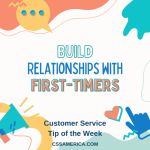When I watch a football game and I see a great quarterback (somebody who may be considered a “Star”), he might be an excellent runner, have a big arm, be able to diagnose the defense and get his team into the right play. But he’s likely not great at everything. Mistakes occur, interceptions are thrown, there are times when he passes and should have run…and vice versa.
I am wowed by musicians – people who can make incredible music on a guitar. People who can play 10 different songs on a piano at the drop of a hat during a church hymn sing. Great drummers who can somehow wield two sticks on drums and symbols while also using their feet to bang the bass drum. But unless you’re a 1-man band (or Prince!), you’re probably not great at all those instruments. While you may be great at playing instruments, you may not be the best singer or lyricist.
My point is that stars are stars for what they do, but that doesn’t mean that they are great at everything.
Defining Stardom
I’m sure if you’re reading this tip and you’re in a customer service role, you’re either a customer service star already or you have the capacity to become a star. Now whether you’re that star athlete or that star musician or that star customer service professional, find your special sauce – those 1 or 2 things where you’re already greater or have the capacity to be greater, and continually strengthen it.
Define YOUR Stardom
Become a star because you know how to calm those irate customers. Become a star because you have an incredible depth of knowledge about your organization’s products, policies, processes, and people. Hone your skills as a star in how you engage people with your body language and your tone and how you can read others and – on the fly – adjust your communication approach to meet what will work best with them.
In this day and age, it is way too UNcommon for people to be stars in business writing, to be able to craft communication pieces and e-mails that convey the specific information, make the other person feel heard, and create clarity in a concise manner on what the next steps are, when they’ll happen, and who’s responsible.
Hone your star skills for teamwork. Not only supporting your teammates but understanding your specific role on the team and learning how to strengthen the traits that make you such an important member of your group.
Be a customer service star by understanding what is unique about you and what you bring to the organization, to the team, to the customer. Then make a conscious effort to build your star talents, attitudes, and attributes.
Become a Customer Service Star.
Signup for FREE Tips! Contact Us More Resources for You Visit Our Home Page
























